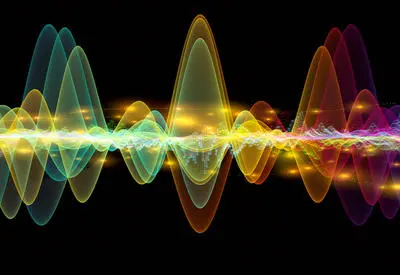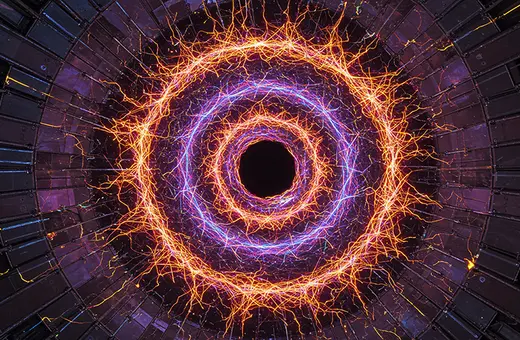The dominant interpretation of the quantum wave function sees it as real – as part of the physical furniture of the universe. Some even go as far as to argue that the entire universe is a quantum wave function. But this interpretation runs into a number of problems, including a clash with Einstein’s theory of relativity. Karl Popper prize-winner, Eddy Keming Chen, suggests that we instead interpret the wave function as the basis for a law of nature that describes how particles, fields and ordinary objects move through space and time. That way, a number of puzzles around quantum mechanics are resolved.
Believe me when I say it's easy to love quantum mechanics—the fundamental rules that describe our physical world, starting at the microscopic level —but hard to interpret what it’s really about. Quantum mechanics is unquestionably useful as an algorithm for predicting the outcomes of experiments and has given birth to many technological innovations — from MRIs to semiconductors. But when it comes to the question of what quantum mechanics tells us about the nature of physical reality, things get very complicated, very quickly. Does quantum mechanics really reveal what exists at the fundamental level of the universe?
 SUGGESTED READING
Reality is just a quantum wave function
By Alyssa Ney
Such questions are at the heart of the foundations of physics. Physicists and philosophers have debated them since the early days of quantum mechanics. And while there are many divergent interpretations, most of them agree that uncovering the physical reality of the quantum world requires us to come to terms with the wave function - the central mathematical object used in quantum mechanics. But what is the wave function? We have invented a beautiful mathematical framework to talk about the wave function, but it is very hard to give a physical interpretation of its abstract mathematics. One dominant interpretation of the wave function is that it in fact represents physical reality – some even argue that the universe as a whole is just a quantum wave function. But that interpretation runs into a number of problems. What I suggest is that we stop thinking of the wave function as real, as part of physical reality, and instead interpret it as providing the basis for a simple law of nature.
SUGGESTED READING
Reality is just a quantum wave function
By Alyssa Ney
Such questions are at the heart of the foundations of physics. Physicists and philosophers have debated them since the early days of quantum mechanics. And while there are many divergent interpretations, most of them agree that uncovering the physical reality of the quantum world requires us to come to terms with the wave function - the central mathematical object used in quantum mechanics. But what is the wave function? We have invented a beautiful mathematical framework to talk about the wave function, but it is very hard to give a physical interpretation of its abstract mathematics. One dominant interpretation of the wave function is that it in fact represents physical reality – some even argue that the universe as a whole is just a quantum wave function. But that interpretation runs into a number of problems. What I suggest is that we stop thinking of the wave function as real, as part of physical reality, and instead interpret it as providing the basis for a simple law of nature.
___
___
At first glance, the wave function stands to quantum mechanics as particles to classical mechanics and electromagnetic fields to classical electrodynamics. The wave function of quantum mechanics seems to have all the marks of something real, indispensable, and should presumably be just as much a part of the constitution of physical reality as ordinary objects like tables and chairs. This might motivate one to adopt a realist interpretation of the wave function. Proponents of this view include many prominent physicists and philosophers such as Sean Carroll, David Albert, and Alyssa Ney. Yet, compared to particles and electromagnetic fields, the wave function is a highly abstract mathematical object that lives in a high-dimensional space, and includes imaginary numbers. It is far from clear how the wave-function is connected to our ordinary world of physical reality.
___
___





















Join the conversation